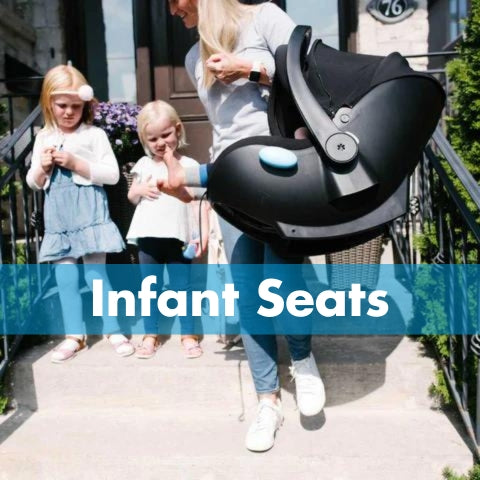DID YOU KNOW that while bulky winter coats and snowsuits are great for keeping kids warm while building the perfect snowman, most aren’t safe to use in a car seat? That’s not just a recommendation -- it’s a fact.
Anyone with kids can attest to the extra time necessary to get them out the door in the winter, so how are you supposed to manage yet another complication winter brings with it? The good news is we’re here to help answer these and many other questions that may come to mind.
Let’s start with the most obvious one.
Why are bulky coats and snowsuits unsafe in a car seat?
The simplest explanation is that the bulky padding found in many coats and snowsuits creates too much space between the harness and your child’s body. This means that in a sudden stop or collision, the padding can compress and create slack in the harness allowing your child’s body to move more than it should.
Since a car seat protects a child in a crash by spreading the force of an impact over the strongest parts of their body, the harness needs to be positioned and tightened properly to offer the best protection. A correctly adjusted should be snug across the thighs, have no visible slack, with the chest clip at armpit level, and tightened just until you cannot pinch a horizontal fold in the strap at your child's collarbone.
Therefore, winter coats and snowsuits (plus hockey gear and bulkier Halloween costumes too, for that matter!) can also make it difficult to get a child properly positioned in the car seat, as their extra thickness can influence the position of the harness or lead to difficulty keeping the straps on your little one’s shoulders.
Then how do I keep my kids safe and warm in the car?
Staying safe and warm in a car seat starts with choosing warm but thin layers. Fleece sweaters, thin down jackets, or lightweight coats are all great choices for the car. It’s also important to choose layered outerwear in a size that fits your child well in order to limit excess fabric that may add too much bulk.
Once safely buckled into the car seat, layering a blanket overtop the harness or even having your child wear their bulkier coat backwards can be a great way to provide extra warmth. Just be mindful not to place anything behind your child!
How do I know the clothing I’ve chosen is safe for the car seat?
You can quickly determine if the layer your child is wearing are car-seat appropriate by placing them in the seat and properly adjusting the harness (as advised above) then removing them from the seat WITHOUT loosening the straps.
Once out of the seat, remove the jacket or sweater, place your child back in the seat, and buckle them in, checking for any excess slack in the harness with the layer. You can best ensure the harness is adjusted tightly by again trying to pinch a horizontal fold in the strap at your child’s collarbone.
It may be necessary to tighten the straps a very slight amount after removing the layer, but if there is significant slack or visible difference in how the harness is positioned on your little one, then that layer is likely too thick to safely use in the car seat.
That’s all well and good for in the car, but what about getting TO the car?
Heavier winter coats, scarves, mittens, and other typical winter accessories can always be used between the house and the car to keep your kids warm when exposed to the elements. A wrapped blanket may also be a good choice if your child is young and small enough to be carried in and out of the vehicle.
Wearable blankets, sometimes known as car seat ponchos, are available for older toddlers and preschoolers, so is another viable option for the short trip to and from the car.
What about booster seats?
If your child is using a booster seat, it’s important to check that the vehicle belt fits properly and close to the body if wearing heavier and warmer layers. Lifting up the bottom of the jacket will remove any extra bulk and allow the belt to fit low on the hips. Unzipping a winter coat and pulling it to the side will also allow for the shoulder belt to fit close to the body.
So, while winter creates some unique challenges when it comes to transporting your family safely, it’s possible for you and your little ones to stay both warm and safe as you travel with these tips and a little planning!




